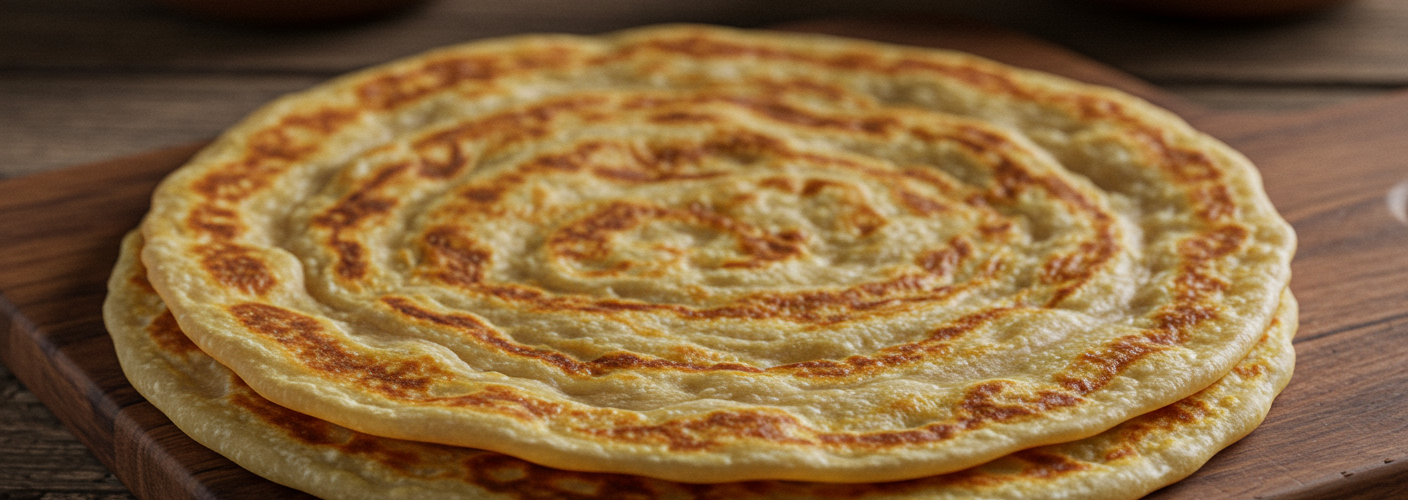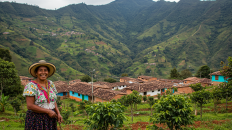Guyanese cuisine is a vibrant fusion of various cultural influences, and among its most cherished staples is the delicious flatbread known as roti. This culinary gem symbolizes the rich heritage of the Guyanese people and is beloved for its versatility and ease of preparation. Whether served alongside savory curries or used as a wrap for diverse fillings, roti holds a special place in the hearts – and stomachs – of many.
At its core, Guyanese roti is made from a simple combination of flour, water, and salt, but the method of preparation elevates it to a whole new level. Traditionally, roti is cooked on a flat surface known as a “tawa” or in a heavy skillet, allowing it to develop a golden-brown exterior while remaining soft and pliable on the inside. The process involves kneading the dough until it is smooth, letting it rest, and then rolling it out into circles before cooking. This uncomplicated technique has been passed down through generations, representing a connection to family and culture.
What makes Guyanese roti distinctive is its unique layering. Cooks often incorporate ghee or oil into the dough, which contributes to its richness and enhances the texture. The layering also creates thin, flaky layers when cooked, giving the roti its signature appeal. Some families have their own secret recipes or techniques handed down through the years, which lend a personal touch to this beloved dish.
Guyanese roti comes in several variations, each designed to complement different types of dishes. One of the most popular styles is “dal puri,” which is stuffed with seasoned split peas and is often enjoyed with a side of curry. Another variation is “buss-up-shut,” which is essentially a soft, torn roti that has been beaten or “bussed up” to create a flaky texture. This style is particularly enjoyed with rich gravies or stews and enhances the overall dining experience.
Beyond its delicious taste, roti plays a significant role in Guyanese culture. It is often a centerpiece at gatherings and celebrations, symbolizing togetherness and community. Family members gather to help make the dough, roll it out, and cook it, often sharing stories and laughter in the process. In this way, roti is not just food; it acts as a medium for connectivity among loved ones.
As globalization continues to promote cultural exchange, Guyanese roti has found its way into international culinary scenes. Many people outside of Guyana are discovering the joys of this flatbread, imitating traditional recipes and adapting them in unique ways. Food bloggers, chefs, and cooking enthusiasts are sharing their experiences, further enhancing the dish’s global appeal.
For those interested in trying their hand at making Guyanese roti, the process is relatively straightforward, making it an accessible recipe for both seasoned cooks and kitchen novices alike. All one needs are the basic ingredients and a bit of practice. The result is a warm, comforting bread that can enhance any meal or stand alone with a touch of butter or a favorite condiment.
In conclusion, Guyanese roti is more than just a flatbread; it is a cultural cornerstone that represents the history, tradition, and unity of the Guyanese people. Whether enjoyed at home or shared with others, it offers a taste of the warmth and hospitality for which Guyana is known. Embracing this delightful bread not only satisfies the palate but also fosters a greater appreciation for the rich tapestry of culinary traditions around the world.




Add comment